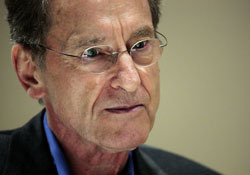

These novels are considered in the light of connections between postwar Germany and the perpetrators of the Holocaust. Chapter 5 examines fictional representations of the Holocaust by German authors: Death in Rome by Wolfgang Koeppen, Alfred Andersch’s Efraim’s Book, Bernhard Schlink’s The Reader and Flights of Love, Rachel Seiffert’s The Dark Room, and Günter Grass’s The Tin Drum, From the Diary of a Snail and Crabwalk. The Reader was chosen as an Oprah's Book Club selection in 1999.
THE READER BY BERNHARD SCHLINK FREE OPRAH MOVIE
Examples of the impact of the Holocaust on the second generation are considered, including several books of interviews with children of leading Nazis, as well as Niklas Frank’s book condemning his father Hans. Bernhard Schlink, author of The Reader, the book from which the movie was based, shares with his thoughts on Kate Winslet's Oscar-winning performance and provides some insight to his stunning novel. Chapter 4 examines the role of Nazi ideology in the Holocaust, and the question of German guilt and responsibility, including the contributions of Eberhard Jäckel, Karl Jaspers and Alexander and Margarete Mitscherlich. The final two chapters are focussed on the perpetrators. The potential for ideological distortion of the events is examined. When Oprah chose Bernhard Schlinks book, The reader (1998), it had.

Chapter 3 considers novels about the Warsaw ghetto by authors who were not personally involved: The Wall by John Hersey, The Final Station Umschlagplatz by Jaroslaw Rymkiewicz and The Beautiful Mrs Seidenman by Andrzej Szczypiorski. and reading habits since she launched her Book Club in. Readings of the diaries of Chaim Kaplan, Emmanuel Ringelblum and Adam Czerniakow, and of Bread for the Departed, a novel by Bogdan Wojdowski, assess how they add to understanding of the events they describe. Chapter 2 considers works produced by writers who were inside the Warsaw ghetto. Questions of ideological bias and historical accuracy in works of fiction are examined. Chapter 1 considers representations of the death camp Treblinka in Jean-François Steiner’s novel Treblinka and Ian MacMillan’s novel Village of a Million Spirits. The first three chapters are focussed on the victims. ABSTRACT This thesis evaluates representations of the Holocaust in fiction and other genres and emphasises the relationship between the texts examined and the historical events they represent.


 0 kommentar(er)
0 kommentar(er)
